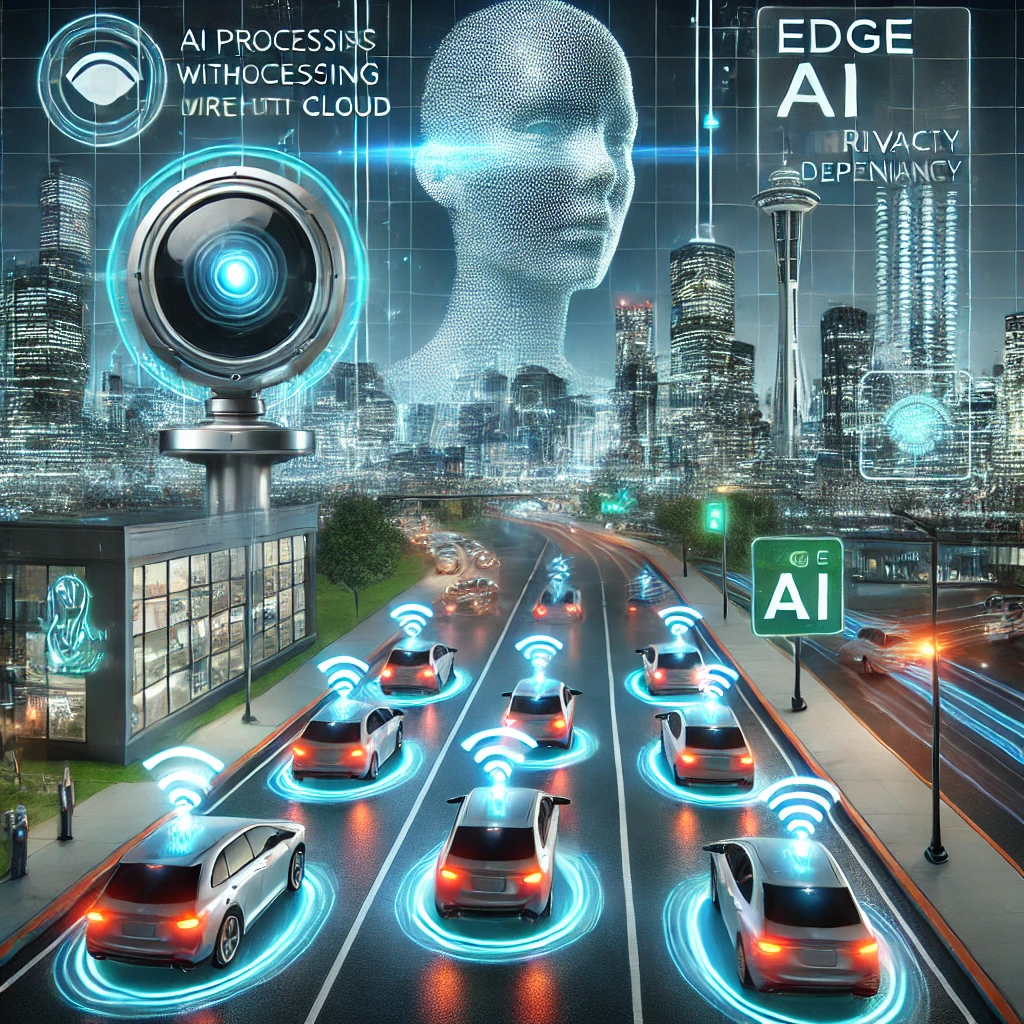What is Edge AI?
Edge AI means using AI right on devices at the network’s “edge,” like phones, cameras, and other IoT gadgets. Unlike regular AI that depends on cloud computing to process data, Edge AI handles data processing on the device itself. This approach leads to faster responses less delay, and better protection of personal info.
How Edge AI Operates
Edge AI operates by integrating pre-trained AI models into devices. Developers create and train these models on robust computers or cloud servers before transferring them to the device. Once installed, these models can carry out tasks such as image recognition, voice processing, or anomaly detection all without needing a cloud connection. This on-device data processing helps to save network bandwidth and leads to quicker decision-making.
Advantages of Edge AI
- Real-Time Decision Making Edge AI has a significant impact on instant decision-making. Take self-driving cars as an example. These vehicles need to make quick choices to ensure safety. Simplified Explanation: Edge AI gives devices the power to think and act on the spot. This proves essential in cases where time is of the essence such as with self-driving cars.
- Better Privacy Edge AI processes data right on the device. This means there’s no need to send private info over the internet. As a result, the risk of data theft or unwanted access goes down. Simplified Explanation: Edge AI keeps your personal data safer. It does this by handling the data on your device instead of sending it to the cloud.
- Lower Latency Edge AI handles data right on the device cutting out delays from cloud back-and-forth. This makes it ideal for tasks needing quick answers. Simplified Explanation: Edge AI speeds up processes by working on your device skipping the wait time you’d get with cloud AI.
- Reduced Network Usage Edge AI crunches data on the device so less info needs to travel over networks. This saves on bandwidth costs and boosts system efficiency. Simplified Explanation: Edge AI shrinks internet data use by doing the hard work on your device saving you money.
Where Edge AI is Used
- Autonomous Vehicles Edge AI plays a crucial role in self-driving cars. It enables these vehicles to process data from cameras and sensors on the spot helping them navigate and steer clear of accidents. Simplified Explanation: In self-driving cars, Edge AI assists the vehicle to “see” and respond to its environment leading to safer driving.
- Smart Cities Edge AI finds use in smart cities to control traffic, keep an eye on public safety, and make the best use of energy. It allows for on-the-spot decision-making in these areas resulting in more productive and secure cities. Simplified Explanation: Edge AI helps cities run more by controlling things like traffic lights and public safety systems right away.
- Healthcare Devices Wearable devices like fitness trackers use Edge AI to keep tabs on health data as it happens. This gives quick feedback to users or alerts doctors when needed. Simplified Explanation: Your fitness tracker uses Edge AI to watch your health and give you quick updates about how you’re doing.
- Industrial IoT In industrial settings, Edge AI helps predict when machines need fixing, keeps an eye on operations as they happen, and makes processes run on their own. This boosts productivity and cuts down on time when machines aren’t working. Simplified Explanation: In factories, Edge AI helps machines keep running well by spotting problems before they crop up.
Challenges and Future of Edge AI
Edge AI brings many perks, but it faces some tough spots too. Small gadgets don’t have much computing muscle, and they need super-streamlined algorithms. But don’t worry – tech keeps getting better making these roadblocks easier to jump over. This means Edge AI is set to be a big player in how we use AI down the road.
